
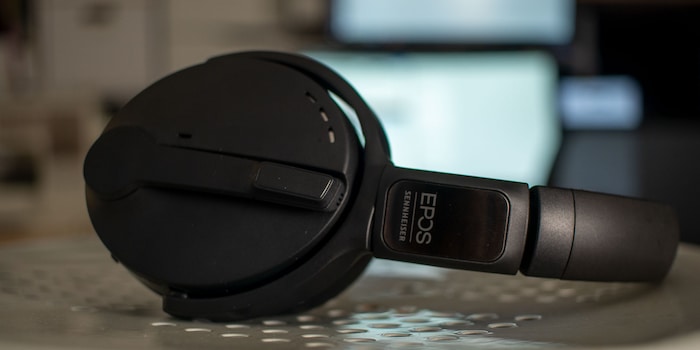
Epos Adapt 560: Business as unusual
With the Adapt 560, Epos Sennheiser is getting involved in the business headset sector with active noise cancelling. The headset proved to be a reliable working device when tested - on the go, in the office and at home.
The gaming PC roars at home, the train on the move and colleagues in the open-plan office. Noise, noise, noise everywhere. Fortunately, the manufacturers of headphones are generous enough to want to protect me from the noise: Active noise cancelling is no longer just in for consumer headphones, but also for business headsets.
This is now also offered by Sennheiser, or rather Epos Sennheiser. The German audio manufacturer is now marketing its gaming and business headsets under this name. A bold combination, but one that makes sense. After all, the requirements for gaming and business headsets are similar. Apart from the design, of course.
Simple headset
The Adapt 560 is an on-ear headset. It therefore rests on the ears and does not enclose them. What I initially thought was a daft idea for an office headset - which I wear more or less all day - actually turns out to be an extremely comfortable solution. Even after several hours, it doesn't pinch or sting anywhere. The ear pads feel pleasant and even in warmer temperatures I don't sweat too much underneath them.
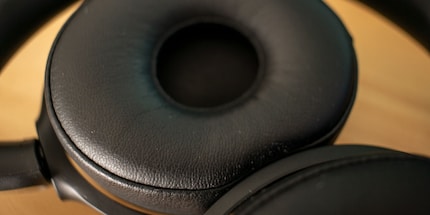
The design is simple and unobtrusive. The microphone is on the right ear cup and can be folded up and down. Folding it down activates it automatically. Both ear cups can be swivelled and folded in. This makes it easy to store without taking up too much space. It is infinitely adjustable and fits both small and large heads. The build quality is very good. I have the impression that the headset would also survive falls and accidental steps on it.
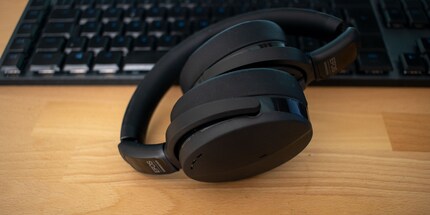
Many possibilities
All controls are located on the right ear cup. At the back is the multifunction button for playback, which is also the volume control. Just below it is the answer and hang up button. The button at the bottom is for pairing and the one at the front is for activating and deactivating noise cancelling. All the controls are great, but it takes me a while to find and master everything.
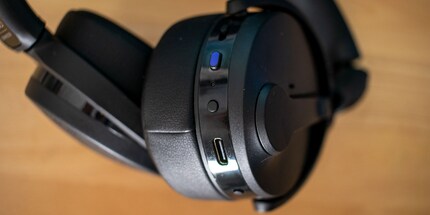
The headset supports Bluetooth version 5.0 and can also be connected via the supplied USB-A dongle or USB cable. Epos relies on USB-C here. Once fully charged, the manufacturer promises up to 46 hours of runtime without noise cancelling. If this is activated, it should still be 24 hours. I didn't measure it with the stopwatch, but the value with noise cancelling activated is about right.
Multipoint, i.e. simultaneous connection with two devices, is also on board. Unfortunately, this didn't work so reliably for me. The headset usually selected the smartphone as the primary connection and not the USB dongle. As a result, I sometimes experienced interference during calls with Microsoft Teams - for which the headset is certified on the PC. I also had the impression that the sound quality suffered from the simultaneous connection. That's why I mostly worked without Multipoint.
Sound quality and active noise cancelling
Since the Adapt 560 is intended for business applications, I mainly use it for phone calls. If the connection is good, I can hear the other person perfectly. Nothing cracks or crackles.
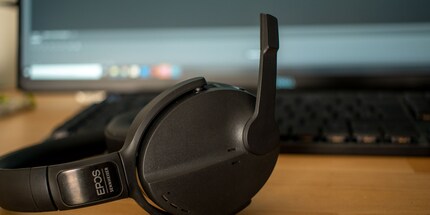
The microphone is the most important thing on the Adapt 560, after all, I want my call partners to understand me well. I make several test calls and ask briefly how the voice quality was. I am always told: excellent. I also want to test the sound and make a call with the headset. I myself find the quality to be above average. I would love to show you that. However, all my attempts to make a good recording have failed. My voice always sounds tinny. But listen for yourself:
Other than that, I mostly use the headset to listen to music in my home office, on the train or in an open-plan office. Thanks to the active noise cancelling, I can't hear the noise of the train when I'm on the move. The headset also efficiently cancels out my PC and 3D printer. In the office, however, I can still hear my office colleagues, albeit at a slightly lower volume. Of course, the active noise cancelling is designed more for low frequencies. As the Adapt is only an on-ear and not an over-ear headset, there is not enough passive noise cancellation. All in all, the active noise cancelling does its job very well.
The sound quality is good for the price. I like the sound - after all, the Adapt 560 is also a Sennheiser product. I'm used to the treble and mid-range being balanced and the bass not being too accentuated. That seems logical to me: with a business headset, the focus is primarily on the voices, which are in the mid-frequency range. This is where the headset shines. Unfortunately, it lacks a little fullness and sometimes sounds a little hollow. Otherwise, there is nothing to criticise about the sound. However, the quality is below the level of comparably priced consumer products that are designed purely for listening to music.

Conclusion: Good business headset
At around 260 francs / 240 euros (as of 24 September 2020), the Adapt 560 is a recommendable business headset in the mid to upper price range. It is very comfortable to wear for a long time, is robust and delivers great sound quality for business. The microphone in particular stands out. Deductions are made for Multipoint, which doesn't work as it should. However, the Adapt 560 is not alone in this. Many manufacturers don't have this under control, as colleague Livia Gamper recently found out
It is particularly suitable for people who don't always work in the same place, i.e. on the move, in the office or at home, and who only want to use one device.
From big data to big brother, Cyborgs to Sci-Fi. All aspects of technology and society fascinate me.


